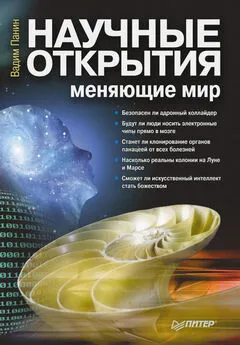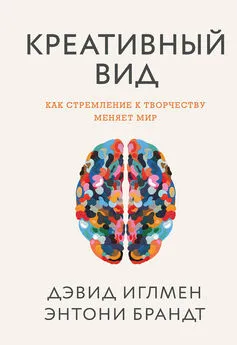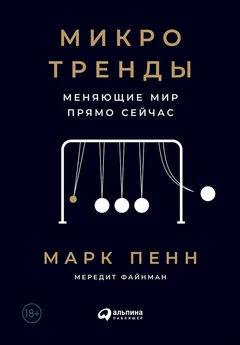Элхонон Голдберг - Креативный мозг [Как рождаются идеи, меняющие мир] [litres]
- Название:Креативный мозг [Как рождаются идеи, меняющие мир] [litres]
- Автор:
- Жанр:
- Издательство:Литагент 5 редакция «БОМБОРА»
- Год:2019
- Город:Москва
- ISBN:978-5-04-105057-3
- Рейтинг:
- Избранное:Добавить в избранное
-
Отзывы:
-
Ваша оценка:
Элхонон Голдберг - Креативный мозг [Как рождаются идеи, меняющие мир] [litres] краткое содержание
Какова природа творчества? Какая работа разума скрывается за его мистикой? Каковы эволюционные корни креативности? В книге нейробиолога и нейропсихолога Элхонона Голдберга эти и другие вопросы рассматриваются как с научной, так с исторической и культурологической точек зрения, превращаясь в масштабное и увлекательное исследование. Опираясь на результаты последних открытий и исследований мозга, а также на собственные идеи и гипотезы, Голдберг приходит к оригинальному, убедительному и даже провокационному пониманию природы творчества и креативности. Читатель совершит удивительное путешествие сквозь эпохи и страны: от античности до далекого будущего, от Западной Европы до Юго-Восточной Азии. Автор делает смелые прогнозы о перспективных направлениях творчества и инноваций, объясняя их биологические и культурные истоки, рассказывает о том, как они сформируют общество будущего и изменят способы развития человеческого мозга.
Креативный мозг [Как рождаются идеи, меняющие мир] [litres] - читать онлайн бесплатно ознакомительный отрывок
Интервал:
Закладка:
9. D. R. Weinberger and K. F. Berman, «Speculation on the Meaning of Cerebral Metabolic Hypofrontality in Schizophrenia», Schizophrenia Bulletin 14 (1988): 157–168; R. A. Renes, M. Vink, A. Van Der Weiden, M. Prikken, M. G. Koevoets, R. S. Kahn, H. Aarts, and N. E. Van Haren, «Impaired Frontal Processing During Agency Inferences in Schizophrenia», Psychiatry Research 248 (2016): 134–141; D. Senkowski and J. Gallinat, «Dysfunctional Prefrontal Gamma-band Oscillations Reflect Working Memory and Other Cognitive Deficits in Schizophrenia», Biological Psychiatry 77 (2015): 1010–1019; H. Tomioka, B. Yamagata, S. Kawasaki, S. Pu, A. Iwanami, J. Hirano, K. Nakagome, and M. Mimura, «A Longitudinal Functional Neuroimaging Study in Medication-naïve Depression After Antidepressant Treatment», PLoS One 10 (2015): E0120828; C. T. Li, T. P. Su, S. J. Wang, P. C. Tu, and J. C. Hsieh, «Prefrontal Glucose Metabolism in Medication-Resistant Major Depression», British Journal of Psychiatry 206 (2015): 316–323; M. E. Vélez-Hernández, E. Padilla, F. Gonzalez-Lima, and C. A. Jiménez-Rivera, «Cocaine Reduces Cytochrome Oxidase Activity in the Prefrontal Cortex and Modifies Its Functional Connectivity with Brainstem Nuclei», Brain Research 1542 (2014): 56–69.
10. A. Dietrich, «Functional Neuroanatomy of Altered States of Consciousness: The Transient Hypofrontality Hypothesis», Consciousness and Cognition 12 (2003): 231–256; A. Dietrich, «The Cognitive Neuroscience of Creativity», Psychonomic Bulletin & Review 11 (2004): 1011–1026.
11. K. M. Heilman, S. E. Nadeau, and D. O. Beversdorf, «Creative Innovation: Possible Brain Mechanisms», Neurocase 9 (2003): 369–379; K. M. Heilman, «Possible Brain Mechanisms of Creativity», Archives of Clinical Neuropsychology 31 (2016): 285–296.
12. A. Kaufman Et Al, «The Neurobiological Foundation of Creative Cognition», in The Cambridge Handbook of Creativity, Eds. J. C. Kaufman and R. J. Sternberg (Cambridge, UK: Cambridge University Press, 2010): 216–232.
13. G. B. Chand, M. Dhamala, «Interactions Among the Brain Default-Mode, Salience, and Central-Executive Networks During Perceptual Decision-Making of Moving Dots», Brain Connectivity 6 (2016): 249–254.
14. E. Goldberg & L. Costa, «Qualitative Indices in Neuropsychological Assessment: Extension of Luria’s Approach. Executive Deficit Following Prefrontal Lesions.» In K. Adams & I. Grant (Eds.), Neuropsychological Assessment in Neuropsychiatric Disorders (New York: Oxford University Press, 1986): 48–64.
15. E. Goldberg, K. Podell, R. Harner, M. Lovell, and S. Riggio, «Cognitive Bias, Functional Cortical Geometry, and the Frontal Lobes: Laterality, Sex, and Handedness», Journal of Cognitive Neuroscience 6 (1994): 274–294; E. Goldberg and K. Podell, «Reciprocal Lateralization of Frontal Lobe Functions», Archives of General Psychiatry 52 (1995): 159–160; E. Goldberg and K. Podell, «Lateralization in the Frontal Lobes: Searching the Right (and Left) Way», Biological Psychiatry 38 (1995): 569–571; K. Podell, M. Lovell, M. Zimmerman, and E. Goldberg, «The Cognitive Bias Task and Lateralized Frontal Lobe Functions in Males», Journal of Neuropsychiatry and Clinical Neuroscience 7 (1995): 491–501.
16. S. Varanese, B. Perfetti, S. Mason, A. Di Rocco, and E. Goldberg, «Lateralized Profiles of Frontal Lobe Dysfunction in Parkinson’s Disease», Presented at the Seventh International Congress On Mental Dysfunctions and Other Nonmotor Features in Parkinson’s Disease and Related Disorders (Barcelona, Spain: December 9—12, 2010); K. T. Hovik, M. Øie, and E. Goldberg, «Inside the Triple-Decker: Tourette’s Syndrome and Cerebral Hemispheres», Executive Functions in Health and Disease, Ed. E. Goldberg (Cambridge, MA: Academic Press, 2017).
17. J. D. Watts and S. H. Strogatz, «Collective Dynamics of ‘Small-World’ Networks», Nature 393 (1998): 440–442.
18. O. Sporns and G. Tononi, «Classes of Network Connectivity and Dynamics», Complexity 7 (2002): 28–38.
19. O. Sporns, G. Tononi, and G. M. Edelman, «Theoretical Neuroanatomy: Relating Anatomical and Functional Connectivity in Graphs and Cortical Connection Matrices», Cerebral Cortex 10 (2000): 127–141.
20. L. Tian, J. Wang, C. Yan, and Y. He, «Hemisphere and Gender Related Differences in Small-World Brain Networks: A Resting-State Functional MRI Study», NeuroImage 54 (2011): 191–202; Y. Iturria-Medina, A. Perez Fernandez, D. M. Morris, E. J. Canales-Rodriguez, H. A. Haroon, L. Garcia Penton, M. Augath, L. Galan Garcia, N. Logothetis, G. J. Parker, and L. Melie-Garcia, «Brain Hemispheric Structural Efficiency and Interconnectivity Rightward Asymmetry in Human and Nonhuman Primates», Cerebral Cortex 21 (2011): 56–67; J. Semmes, «Hemispheric Specialization: A Possible Clue to Mechanism», Neuropsychologia 6 (1968): 11–26; M. Daianu, N. Jahanshad, E. L. Dennis, A. W. Toga, K. L. McMahon, G. I. De Zubicaray, N. G. Martin, M. J. Wright, I. B. Hickie, and P. M. Thompson, «Left Versus Right Hemisphere Differences in Brain Connectivity: 4-Tesla HARDI Tractography in 569 Twins», Proceedings of the IEEE International Symposium on Biomedical Imaging 9 (2012): 526–529.
21. C. D. Good, I. S. Johnsrude, J. Ashburner, R. N. Henson, K. J. Friston, and R. S. Frackowiak, «A Voxel-based Morphometric Study of Ageing in 465 Normal Adult Human Brains», Neuroimage 14 (2001): 21–36; J. Pujol, A. Lopez-Sala, J. Deus, N. Cardoner, N. Sebastian-Galles, G. Conesa, and A. Capdevilla, «The Lateral Asymmetry of the Human Brain Studied by Volumetric Magnetic Resonance Imaging», Neuroimage 17 (2002): 670–679; R. C. Gur, I. K. Packer, J. P. Hungerbuhler, M. Reivich, W. D. Obrist, W. S. Amarnek, and H. A. Sackeim, «Differences in the Distribution of Gray and White Matter in Human Cerebral Hemispheres», Science 207 (1980): 1226–1228.
22. H. Poincaré, «The Mathematical Creation.» In The Creative Process: Reflections on Inventions in the Arts and Sciences, Ed. B. Chiselin (Oxnard, CA: Transformational Book Circle, 1986).
23. B. Ghiselin, The Creative Process: Reflections on the Invention in the Arts and Sciences, 1st edn. (Oakland, CA: University of California Press, 1985).
24. N. Marupaka and A. A. Minai, «Connectivity and Creativity in Semantic Neural Networks.» Neural Networks (IJCNN) (International Joint Conference on Neural Networks, July 31— August 5, 2011).
25. J. Hadamard, The Mathematician’s Mind: The Psychology of Invention in the Mathematical Field (Princeton, NJ: Princeton University Press, 1945): 142–143.
26. B. Ghiselin, The Creative Process: Reflections on the Invention in the Arts and Sciences, 1st edn. (Oakland, CA: University of California Press, 1985), 60.
27. A. Luria, Higher Cortical Functions in Man, 2nd edn. (New York: Springer, 1980); A. Luria, The Working Brain: An Introduction to Neuropsychology (New York: Basic Books, 1976); J. M. Fuster, The Neuroscience of Freedom and Creativity: Our Predictive Brain (Cambridge, UK: Cambridge University Press, 2013): 176.
1. F. De Waal, Are We Smart Enough to Know How Smart Animals Are? 1st edn. (New York: W. W. Norton & Company, 2016).
2. J. Grainger, S. Dufau, M. Montant, J. C. Ziegler, and J. Fagot, «Orthographic Processing in Baboons (Papio Papio)», Science 336 (2012): 245–248.
3. J. Fagot and J. Vauclair, «Video-Task Assessment of Stimulus Novelty Effects on Hemispheric Lateralization in Baboons (Papio Papio)», Journal of Comparative Psychology 108 (1994): 156–163; J. Grainger, S. Dufau, M. Montant, J. C. Ziegler, and J. Fagot, «Orthographic Processing in Baboons (Papio Papio)», Science 336 (2012): 245–248.
4. P. F. MacNeilage, L. J. Rogers, and G. Vallortigara, «Origins of the Left and Right Brain», Scientific American 301 (2009): 60–67.
5. S. Klur, C. Muller, A. Pereira de Vasconcelos, T. Ballard, J. Lopez, R. Galani, U. Certa, and J. C. Cassel, «Hippocampal-dependent Spatial Memory Functions Might Be Lateralized in Rats: An Approach Combining Gene Expression Profiling and Reversible Inactivation», Hippocampus 19 (2009): 800–816.
6. K. W. Pryor, R. Haag, and J. O’Reilly, «The Creative Porpoise: Training for Novel Behavior», Journal of the Experimental Analysis of Behavior 12 (1969): 653–661.
7. K. W. Pryor, R. Haag, and J. O’Reilly, «The Creative Porpoise: Training for Novel Behavior», Journal of the Experimental Analysis of Behavior 12 (1969): 661.
8. A. Kilian, L. Von Fersen, and O. Güntürkün, «Left Hemispheric Advantage for Numerical Abilities in the Bottlenose Dolphin», Behavioral Processes 68 (2005): 179–184.
9. M. Sakai, T. Hishii, S. Takeda, and S. Koshima, «Laterality of Flipper Rubbing Behaviour in Wild Bottlenose Dolphins (Tursiops Aduncus): Caused by Asymmetry of Eye Use?» Behavioural Brain Research 170 (2006): 204–210.
10. C. Blois-Heulin, M. Crével, M. Böye, and A. Lemasson, «Visual Laterality in Dolphins: Importance of the Familiarity of Stimuli», BMC Neuroscience 13 (2012): 9; M. Siniscalchi, S. Dimatteo, A. M. Pepe, R. Sasso, and A. Quaranta, «Visual Lateralization in Wild Striped Dolphins (Stenella Coeruleoalba) in Response to Stimuli with Different Degrees of Familiarity», PLoS One 7 (2012): E30001.
11. J. Ackerman, The Genius of Birds (New York: Penguin Press, 2016).
12. M. O’Hara, A. M. Auersperg, T. Bugnyar, and L. Huber, «Inference by Exclusion in Goffin Cockatoos (Cacatua Goffini)», PLoS One 10 (2015): E0134894; A. M. Auersperg, N. Oswald, M. Domanegg, G. K. Gajdon, and T. Bugnyar, «Unrewarded Object Combinations in Captive Parrots», Animal Behavior and Cognition 1 (2014): 470–488; A. M. Auersperg, A. Kacelnik, and A. M. Von Bayern, «Explorative Learning and Functional Inferences on a Five-step Means-Means-End Problem in Goffin’s Cockatoos (Cacatua Goffini)», PLoS One 8 (2013): E68979.
13. E. D. Jarvis, O. Güntürkün, L. Bruce, A. Csillag, H. Karten, W. Kuenzel, L. Medina, G. Paxinos, D. J. Perkel, T. Shimizu, G. Striedter, J. M. Wild, G. F. Ball, J. Dugas-Ford, S. E. Durand, G. E. Hough, S. Husband, L. Kubikova, D. W. Lee, C. V. Mello, A. Powers, C. Siang, T. V. Smulders, K. Wada, S. A. White, K. Yamamoto, J. Yu, A. Reiner, A. B. Butler, and The Avian Brain Nomenclature Consortium, «Avian Brains and a New Understanding of Vertebrate Brain Evolution», Nature Reviews Neuroscience 6 (2005): 151–159.
14. M. Magat and C. Brown, «Laterality Enhances Cognition in Australian Parrots», Proceedings in Biological Sciences 276 (2009): 4155–4162; J. N. Daisley, G. Vallortigara, and L. Regolin, «Logic in an Asymmetrical (Social) Brain: Transitive Inference in the Young Domestic Chick», Society of Neuroscience 5 (2010): 309–319.
15. J. Verhaal, J. A. Kirsch, I. Vlachos, M. Manns, and O. Güntürkün, «Lateralized Reward-Related Visual Discrimination in the Avian Entopallium», European Journal of Neuroscience 35 (2012): 1337–1343.
16. B. A. Bell, M. L. Phan, and D. S. Vicario, «Neural Responses in Songbird Forebrain Reflect Learning Rates, Acquired Salience and Stimulus Novelty After Auditory Discrimination Training», Journal of Neurophysiology 113 (2015): 1480–1492.
17. J. J. Templeton, D. J. Mountjoy, S. R. Pryke, and S. C. Griffith, «In the Eye of the Beholder: Visual Mate Choice Lateralization in a Polymorphic Songbird», Biology Letters 8 (2012): 924–927; J. J. Templeton, B. G. McCracken, M. Sher, and D. J. Mountjoy, «An Eye for Beauty: Lateralized Visual Stimulation of Courtship Behavior and Mate Preferences in Male Zebra Finches, Taeniopygia Guttata», Behavioral Processes 102 (2014): 33–39.
18. S. Moorman, S. M. Gobes, M. Kuijpers, A. Kerkhofs, M. A. Zandbergen, and J. J. Bolhuis, «Human-like Brain Hemispheric Dominance in Birdsong Learning», Proceedings of the National Academy of Sciences USA 109 (2012): 12782—12787.
Читать дальшеИнтервал:
Закладка:
![Обложка книги Элхонон Голдберг - Креативный мозг [Как рождаются идеи, меняющие мир] [litres]](/books/1065923/elhonon-goldberg-kreativnyj-mozg-kak-rozhdayutsya-id.webp)









